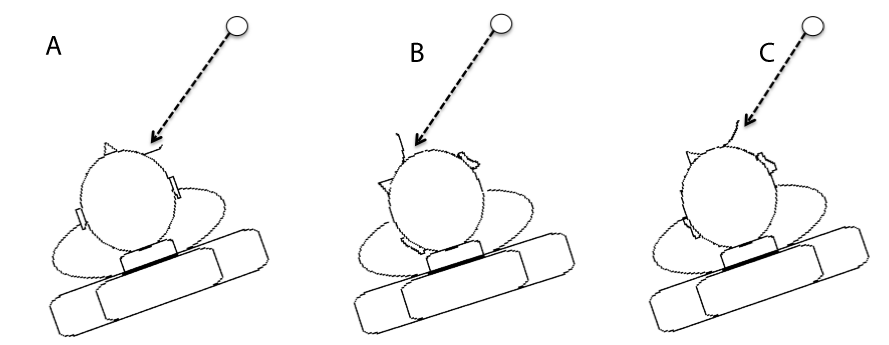
A. Patient lying supine on the operative table that is tilted 20-30 degrees in the sagittal plane. The facelift skin flaps of the right cheek are elevated and the surgeon’s line of vision is unable to visualize the underlying skin and Superficial Musculoaponeurotic System (SMAS) layer.
B. Lying supine on an operative table tilted 20-30 degress in the sagittal plane, the facelift patient with a non-arthritic neck is able to rotate toward their left side at 45 degrees in the sagittal plane from the meridian. The surgeon’s line of vision is adequate to visualize the surgical field.
C. Typical facelift patient undergoing facelift surgery with stiff neck secondary to undiagnosed cervical spondylosis. The surgeon is better able to visualize the surgical field despite the inadequate ability of the patient to rotate their neck. The underlying surface of the skin flap is still difficult to visualize thus forcing the surgeon to arch his/her neck and back to better attain a clear line of vision. Prolonged arching, bending, and twisting of the surgeon’s neck may lead to neck pains resulting in cervical spondylosis and muscle spasm.